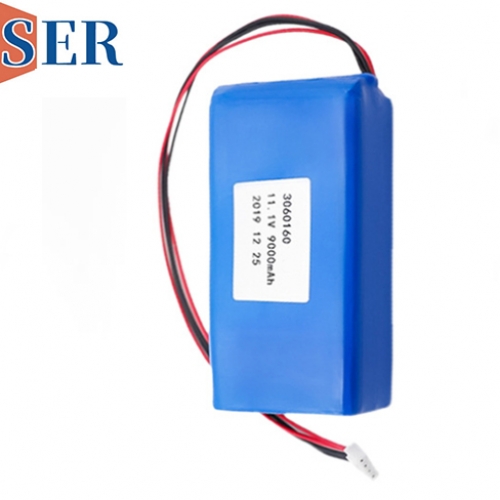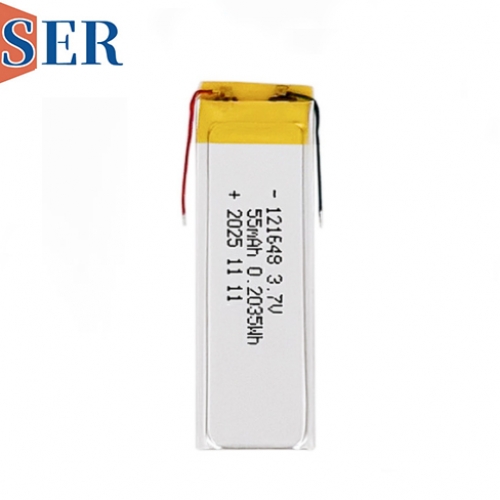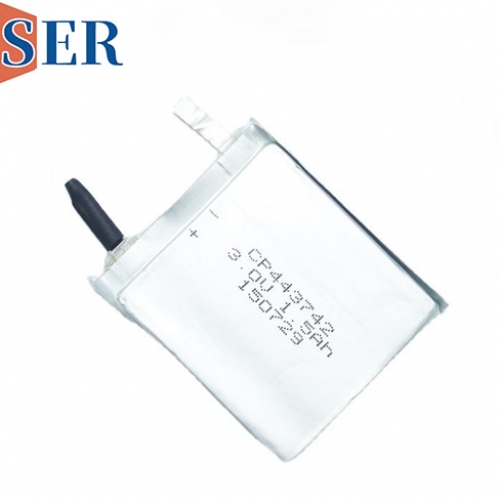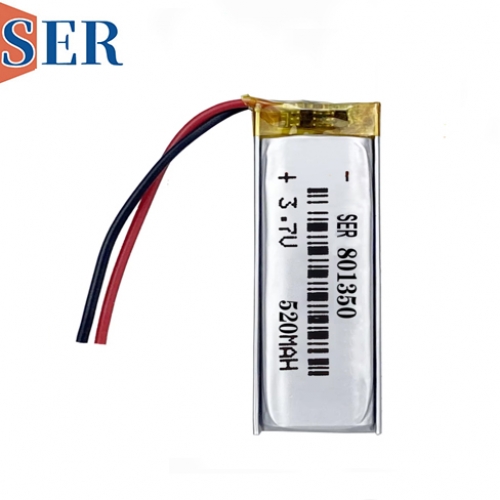Customizing 3.7V Ultra-Thin Rechargeable Pouch Cells 091525 15mAh Lithium Polymer Batteries for Wearable Devices
Customizing 3.7V Ultra-Thin Rechargeable Pouch Cells 091525 15mAh Lithium Polymer Batteries for Wearable Devices

Abstract:
The integration of advanced battery technologies into wearable devices has revolutionized the way we interact with and monitor our health, fitness, and daily activities. This article explores the customization of 3.7V ultra-thin rechargeable pouch cells and the 091525 15mAh rechargeable ultra-thin lithium polymer battery, focusing on their design, application, and optimization for wearable technology. By understanding the unique requirements of these devices, manufacturers can tailor battery solutions to enhance performance, safety, and user experience.
Keywords: Customized Batteries, Wearable Devices, Ultra-Thin Pouch Cells, Lithium Polymer Battery, Energy Optimization
Introduction
Wearable devices have become an integral part of modern life, offering functionalities ranging from health monitoring and fitness tracking to communication and entertainment. These devices require compact, lightweight, and efficient power sources to ensure long-lasting performance and user comfort. The 3.7V ultra-thin rechargeable pouch cell and the 091525 15mAh rechargeable ultra-thin lithium polymer battery are two such power solutions that have been customized to meet the specific needs of wearable technology.
Understanding the Need for Customization
2.1 Form Factor and Flexibility
Wearable devices come in various shapes and sizes, from wristbands and smartwatches to AR glasses and health patches. This diversity necessitates batteries that can conform to the device's form factor while maintaining flexibility and durability. Customized pouch cells and lithium polymer batteries offer the flexibility to be molded into various shapes, making them ideal for integration into wearable devices.
2.2 Energy Density and Capacity
The energy density and capacity of a battery are critical factors in determining the runtime and functionality of a wearable device. Customized batteries can be designed to maximize energy density while maintaining a compact form factor, ensuring that the device can operate for extended periods without frequent recharging.
2.3 Safety and Reliability
Safety is paramount in wearable devices, as they are often worn close to the body for prolonged periods. Customized batteries can incorporate advanced safety features, such as overcharge protection, short-circuit prevention, and thermal management, to minimize the risk of accidents and ensure reliable performance.
Customizing 3.7V Ultra-Thin Rechargeable Pouch Cells
3.1 Design Considerations
When customizing 3.7V ultra-thin rechargeable pouch cells for wearable devices, several design considerations must be taken into account:
Form Factor: The battery must be designed to fit seamlessly into the device's enclosure, taking into account the device's dimensions, shape, and intended use.
Energy Density: Optimizing the energy density of the battery is crucial for ensuring long-lasting performance. This can be achieved through the use of advanced electrode materials and electrolyte formulations.
Flexibility: The battery must be flexible enough to withstand the bending and twisting that may occur during normal use. This can be achieved by using a laminated structure with flexible substrates and encapsulants.
3.2 Application Examples
3.2.1 Smartwatches
Smartwatches require batteries that can fit within the slim profile of the device while providing sufficient energy for all-day use. Customized 3.7V pouch cells can be designed to match the exact dimensions of the watch case, ensuring a seamless integration and optimal performance.
3.2.2 Fitness Trackers
Fitness trackers often require long-lasting batteries to support continuous heart rate monitoring, GPS tracking, and other features. Customized pouch cells can be optimized for high energy density and low self-discharge rates, ensuring that the tracker can operate for weeks on a single charge.
3.2.3 AR Glasses
Augmented reality (AR) glasses require batteries that can provide high power output for extended periods while maintaining a lightweight and comfortable design. Customized pouch cells can be designed to fit within the frame of the glasses, provide the necessary power for immersive AR experiences.
Customizing the 091525 15mAh Rechargeable Ultra-Thin Lithium Polymer Battery
4.1 Design Considerations
The 091525 15mAh lithium polymer battery is a compact power solution suitable for small wearable devices, such as health monitoring patches or smart earbuds. When customizing this battery, the following considerations must be taken into account:
Capacity and Voltage: The 15mAh capacity is suitable for low-power devices, but higher capacities can be achieved through customization.
Form Factor: The battery must be ultra-thin to fit within the device's enclosure without compromising performance.
Cycle Life: Customizing the battery chemistry can improve cycle life, ensuring longer battery lifespan and reduced replacement costs.
4.2 Application Examples
4.2.1 Health Monitoring Patches
Health monitoring patches require batteries that can provide continuous power for sensors and communication modules. Customized lithium polymer batteries can be designed with extended cycle life and fast-charging capabilities to support the device's 24/7 monitoring needs.
4.2.2 Medical Wearables
Customized 15mAh lithium polymer batteries can be integrated into medical wearables, such as smart patches or health monitoring devices, to provide continuous power for extended use.
4.3 Smart Jewelry and Accessories
Smart jewelry, such as smart rings or bracelets, requires batteries that can fit into small, intricate designs. Customized lithium polymer batteries can be designed to match the unique aesthetics and functionality of these devices.
Optimization and Future Trends
5.1 Energy Optimization
To enhance the performance of customized batteries, the following optimization strategies can be employed:
Battery Management Systems: Implementing smart charging algorithms can improve battery utilization and extend battery life.
Material Innovations: New materials, such as solid-state electrolytes or graphene-based supercapacitors, can be integrated with customized batteries to improve energy density and performance.
5.2 Future Trends in Wearable Batteries
The future of wearable devices may see the integration of flexible electronics and sensors, requiring batteries that can adapt to new form factors and functionalities. Customized pouch cells and lithium polymer batteries can be designed with these advancements in mind.
Conclusion
The customization of 3.7V ultra-thin rechargeable pouch cells and 091525 15mAh lithium polymer batteries for wearable devices offers significant flexibility in design and application, but requires careful consideration of form factor, energy density, and safety. By customizing these batteries to meet the specific needs of wearable devices, manufacturers can create innovative, efficient power solutions that enhance user experience and device functionality.
Risks and Challenges
7.1 Safety Risks
While customized batteries offer enhanced performance, they must also meet strict safety standards to ensure reliable operation in wearable devices. Manufacturers must comply with electrical safety regulations and ensure proper insulation and protection against overcharging and overheating.
7.2 Environmental Impact
The production and disposal of batteries must comply with environmental regulations, minimizing the use of hazardous materials and promoting recycling.
7.3 Regulatory Compliance
Manufacturers must ensure that customized batteries meet all relevant safety and performance standards before they can be marketed.
Conclusion
The customization of 3.7V ultra-thin rechargeable pouch cells and 091525 15mAh lithium polymer batteries for wearable devices represents a significant advancement in power source technology. By focusing on form factor, energy density, safety, and environmental impact, manufacturers can create batteries that not only meet the technical requirements of wearable devices but also enhance user experience and device functionality. As technology continues to evolve, customized batteries will play a crucial role in driving the next generation of wearable technology.





